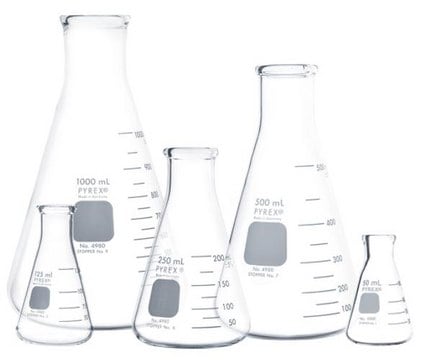推荐产品
出版資訊
B. Ratner, et al., ed., Elsevier, 2004, 864 pp., hard cover
製造商/商標名
Elsevier
一般說明
The second edition provides the most up-to-date comprehensive review of all aspects of biomaterials science. It integrates a historical perspective of materials engineering principles with biological interactions of biomaterials. Also provided within are regulatory and ethical issues in addition to future directions of the field, and a state-of-the-art update of medical and biotechnological applications.
All aspects of biomaterials science are thoroughly addressed, from tissue engineering to cochlear prostheses and drug delivery systems. Over 80 contributors from academia, government and industry detail the principles of cell biology, immunology, and pathology. Focus within pertains to the clinical uses of biomaterials as components in implants, devices, and artificial organs. This reference also touches upon their uses in biotechnology as well as the characterization of the physical, chemical, biochemical and surface properties of these materials.
All aspects of biomaterials science are thoroughly addressed, from tissue engineering to cochlear prostheses and drug delivery systems. Over 80 contributors from academia, government and industry detail the principles of cell biology, immunology, and pathology. Focus within pertains to the clinical uses of biomaterials as components in implants, devices, and artificial organs. This reference also touches upon their uses in biotechnology as well as the characterization of the physical, chemical, biochemical and surface properties of these materials.
目錄
INTRODUCTION
BIOMATERIALS HISTORY
PART I: Materials Science & Engineering
Properties of Materials
Introduction
Bulk Properties of Materials
Finite Element Analysis
Surface Properties of Materials
Role of Water in Biomaterials
Classes of Materials Used in Medicine
Introduction
Metals
Polymers
A Brief History of Silicone Biomaterials
Hydrogels
Bioresorbable and Biodegradable Materials
Ceramics, Classes and Class-Ceramics
Natural Materials
Composites
Thin Films, Grafts, Coatings
Medical Fibers and Biotextiles
Biological Functional Materials
Smart Materials
Pyrolytic Carbon for Long-Term Medical Implants
Textured and Porous Materials
Non-fouling Surfaces
PART II: Biology, Biochemistry and Medicine
Background Concepts
Introduction
The Role of Absorbed Proteins in Tissue Response to Biomaterials
Calls and Cell Injury
Tissues: The Extracellular Matrix and Call-Biomaterials Interactions
Mechanical Forces on Cells
Host Reactions to Biomaterials and Their Evaluation
Testing Biomaterials
Introduction
Inflammation, Wound Healing and the Foreign Body Response
The Complement Systems
Systemic Toxicity and Hypersensitivity
Blood Coagulation and Blood-Materials Interactions
Tumorigenesis and Biomaterials
Infection
Testing Biomaterials
Introduction
In Vitro Assessment of Tissue Compatibility
In Vivo Assessment of Tissue Compatibility
Testing of Blood-Materials Interactions
Large Animal Models in Cardiac and Vascular Biomaterials Research and Testing
Microscopy for Biomaterials Science
Degradation of Materials in the Biological Environment
Introduction
Degradation of Materials in the Biological Environment
Degradative Effects of the Biological Environment on Metals and Ceramics
Pathologic Calcification of Biomaterials
Applications of Materials in Medicine, Dentistry and Biology
Introduction
Cardiovascular Medical Devices
Nonthrombogenic Treatments and Strategies
Dental Implantation
Adhesive and Sealants
Ophthalmologic Applications
Intraocular Lens Implants: A Scientific Perspective
Clinical Aspects of Orthopedic Biomaterial Performance
Drug Delivery Systems
Sutures
Burn Dressings and Skin Substitutes
Bioelectrodes
Biomedical Sensors and Biosensors
Diagnostics and Biomaterials
Artificial Organs and Tissues
Introduction
Implantable Cardiac Assist Devices
Extracorporeal Artificial Organs
Cochlear Implants
Artificial Red Blood Cell Substitutes
Tissue Engineering
Introduction
Overview of Tissue Engineering
Immunoissolation
Synthetic Bioresorbable Polymer Scaffolds
PART III: Practical Aspects of Biomaterials
Implants & Devices - Special Concerns
Introduction
Sterilization of Implants and Devices
Implants and Device Failure
Correlations of Materials Surface Properties with Biological Responses
Implant Retrieval and Evaluation
New Products and Standards
Introduction
Voluntary Consensus Standards
Development and Regulation of Medical Products Using Biomaterials
Ethical Issues in the Development of New Biomaterials
Legal Aspects of Biomaterials
Perspectives and Possibilities in Biomaterials Science
APPENDICES
BIOMATERIALS HISTORY
PART I: Materials Science & Engineering
Properties of Materials
Introduction
Bulk Properties of Materials
Finite Element Analysis
Surface Properties of Materials
Role of Water in Biomaterials
Classes of Materials Used in Medicine
Introduction
Metals
Polymers
A Brief History of Silicone Biomaterials
Hydrogels
Bioresorbable and Biodegradable Materials
Ceramics, Classes and Class-Ceramics
Natural Materials
Composites
Thin Films, Grafts, Coatings
Medical Fibers and Biotextiles
Biological Functional Materials
Smart Materials
Pyrolytic Carbon for Long-Term Medical Implants
Textured and Porous Materials
Non-fouling Surfaces
PART II: Biology, Biochemistry and Medicine
Background Concepts
Introduction
The Role of Absorbed Proteins in Tissue Response to Biomaterials
Calls and Cell Injury
Tissues: The Extracellular Matrix and Call-Biomaterials Interactions
Mechanical Forces on Cells
Host Reactions to Biomaterials and Their Evaluation
Testing Biomaterials
Introduction
Inflammation, Wound Healing and the Foreign Body Response
The Complement Systems
Systemic Toxicity and Hypersensitivity
Blood Coagulation and Blood-Materials Interactions
Tumorigenesis and Biomaterials
Infection
Testing Biomaterials
Introduction
In Vitro Assessment of Tissue Compatibility
In Vivo Assessment of Tissue Compatibility
Testing of Blood-Materials Interactions
Large Animal Models in Cardiac and Vascular Biomaterials Research and Testing
Microscopy for Biomaterials Science
Degradation of Materials in the Biological Environment
Introduction
Degradation of Materials in the Biological Environment
Degradative Effects of the Biological Environment on Metals and Ceramics
Pathologic Calcification of Biomaterials
Applications of Materials in Medicine, Dentistry and Biology
Introduction
Cardiovascular Medical Devices
Nonthrombogenic Treatments and Strategies
Dental Implantation
Adhesive and Sealants
Ophthalmologic Applications
Intraocular Lens Implants: A Scientific Perspective
Clinical Aspects of Orthopedic Biomaterial Performance
Drug Delivery Systems
Sutures
Burn Dressings and Skin Substitutes
Bioelectrodes
Biomedical Sensors and Biosensors
Diagnostics and Biomaterials
Artificial Organs and Tissues
Introduction
Implantable Cardiac Assist Devices
Extracorporeal Artificial Organs
Cochlear Implants
Artificial Red Blood Cell Substitutes
Tissue Engineering
Introduction
Overview of Tissue Engineering
Immunoissolation
Synthetic Bioresorbable Polymer Scaffolds
PART III: Practical Aspects of Biomaterials
Implants & Devices - Special Concerns
Introduction
Sterilization of Implants and Devices
Implants and Device Failure
Correlations of Materials Surface Properties with Biological Responses
Implant Retrieval and Evaluation
New Products and Standards
Introduction
Voluntary Consensus Standards
Development and Regulation of Medical Products Using Biomaterials
Ethical Issues in the Development of New Biomaterials
Legal Aspects of Biomaterials
Perspectives and Possibilities in Biomaterials Science
APPENDICES
我们的科学家团队拥有各种研究领域经验,包括生命科学、材料科学、化学合成、色谱、分析及许多其他领域.
联系技术服务部门








